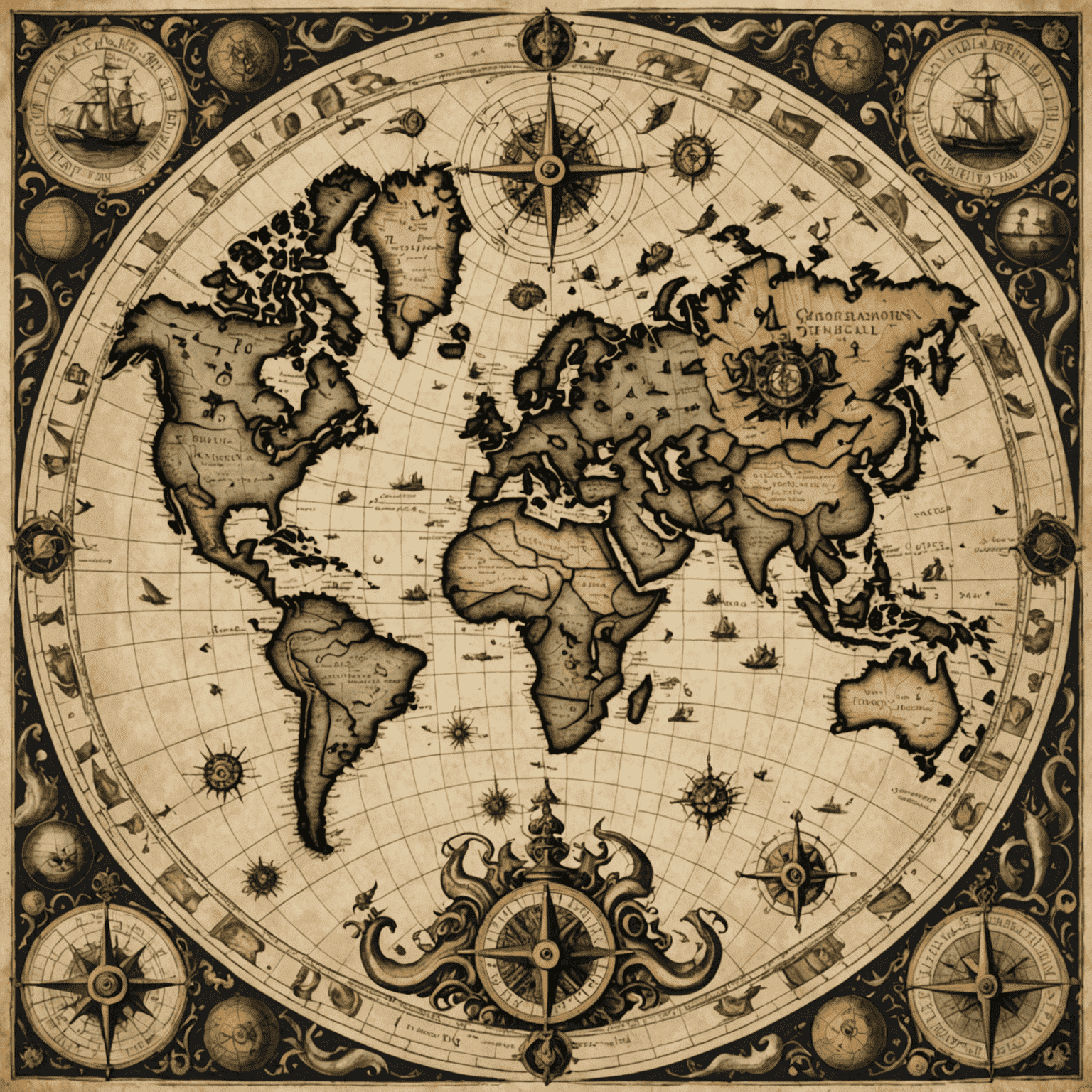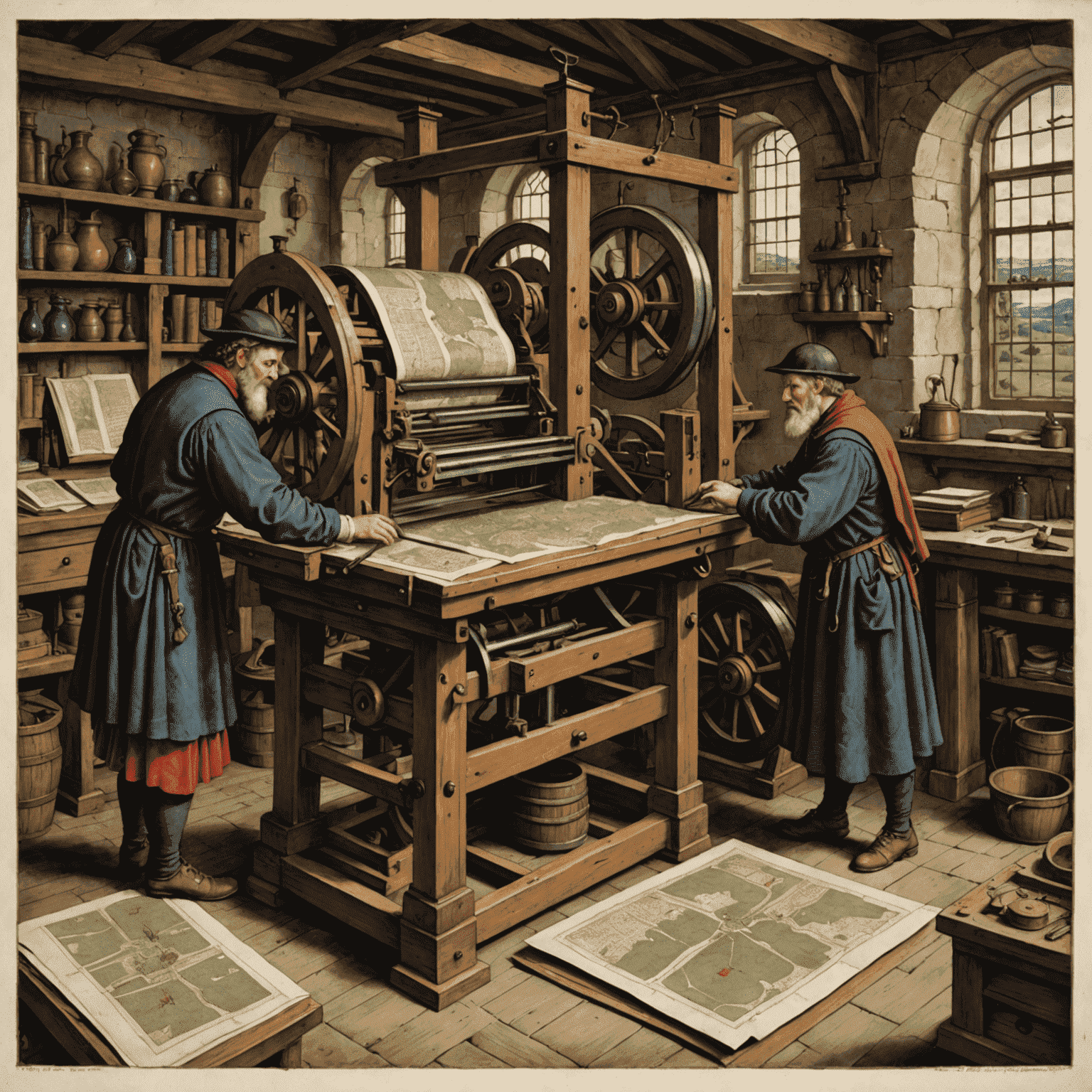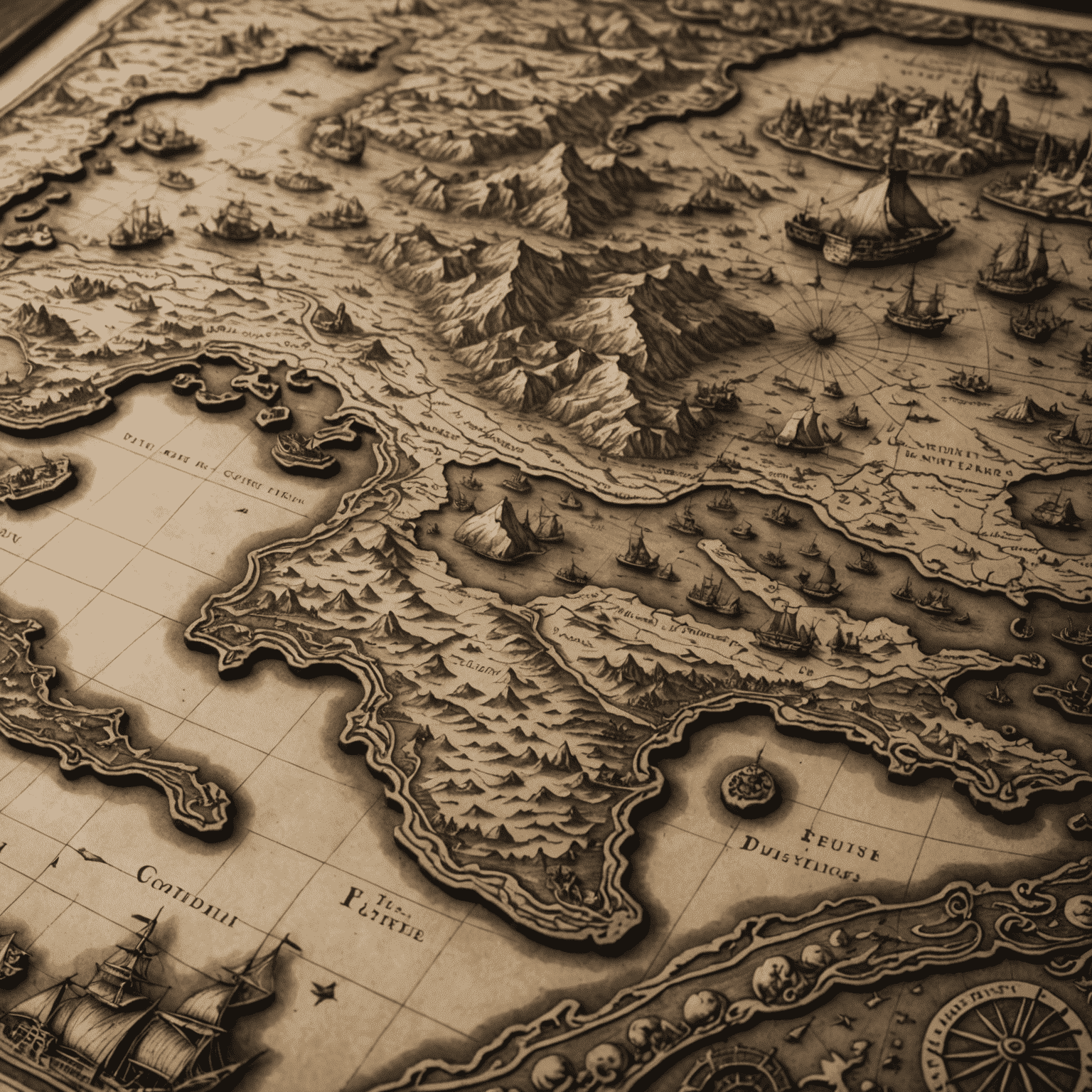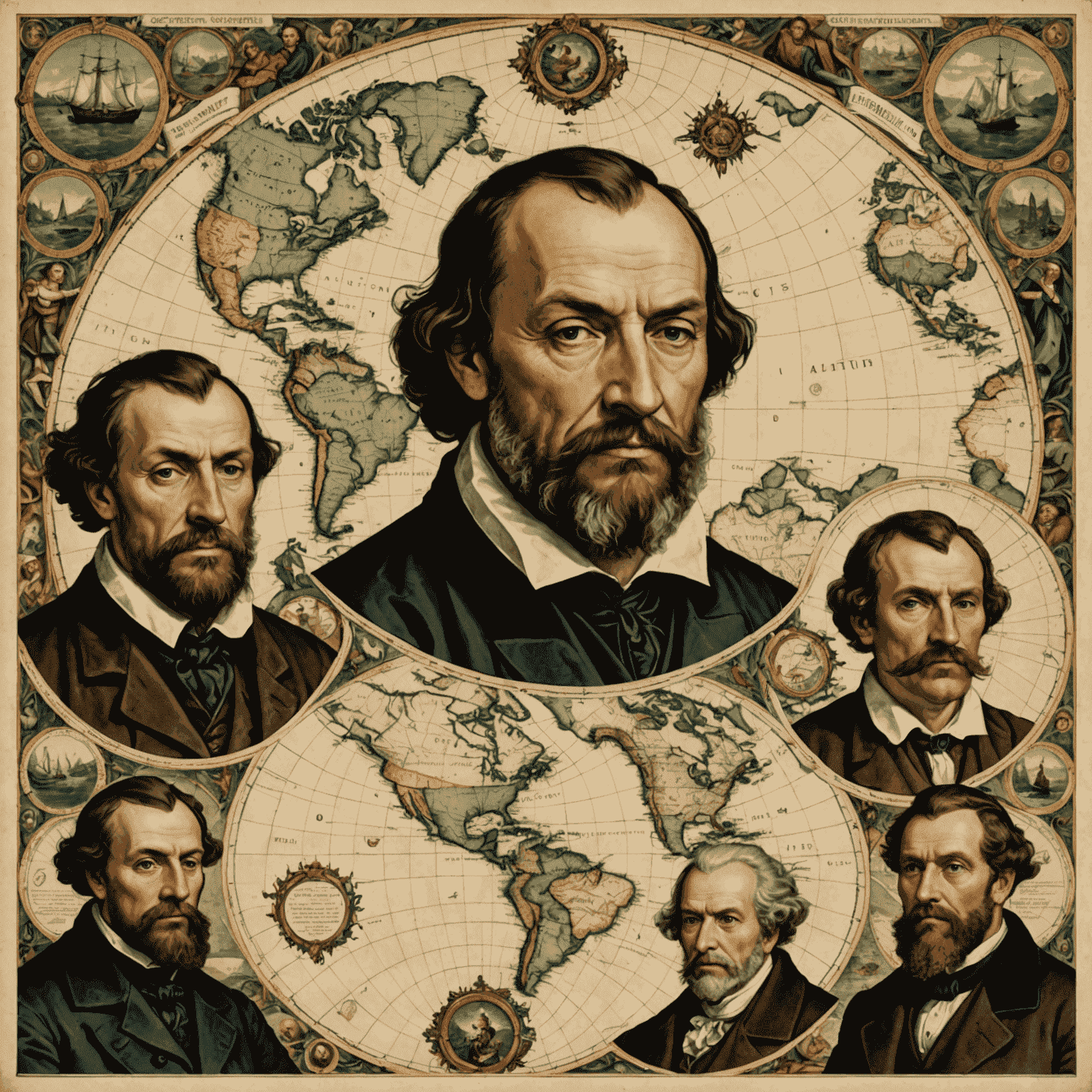Cartography in the Age of Exploration
The 15th to 17th centuries marked a pivotal era in the evolution of cartography, profoundly shaping global exploration and our understanding of the world.

The Dawn of a New Era
As European nations embarked on ambitious voyages of discovery, cartographers faced the monumental task of depicting a rapidly expanding world. The Age of Exploration brought forth a renaissance in map-making, blending ancient knowledge with groundbreaking discoveries.
"Maps are the greatest of all epic poems. Their lines and colors show the realization of great dreams." - Gilbert H. Grosvenor
Technological Advancements
The introduction of the printing press revolutionized map production and distribution. Copper engraving techniques allowed for finer detail and more accurate representations of coastlines and terrain. These advancements made maps more accessible to merchants, scholars, and explorers alike.

A 15th-century printing press revolutionizing map production

Copper engraving plate with intricate map details
Mapping the Unknown
As explorers ventured into uncharted territories, cartographers grappled with representing the unknown. The edges of maps often featured fantastical creatures and speculative landmasses, reflecting a blend of scientific observation and imagination. The phrase "Here be dragons" became synonymous with these mysterious regions.
Notable Cartographers
- Gerardus Mercator: Revolutionized navigation with his 1569 world map using the Mercator projection.
- Abraham Ortelius: Created the first modern atlas, "Theatrum Orbis Terrarum," in 1570.
- Martin Waldseemüller: First to use the name "America" on a world map in 1507.

Impact on Global Exploration
The evolving cartography of this era played a crucial role in fueling further exploration. Accurate maps became invaluable tools for navigation, trade, and territorial claims. They not only guided explorers but also shaped political and economic strategies of emerging colonial powers.
Legacy and Influence
The cartographic advancements of the Age of Exploration laid the foundation for modern mapping techniques. These historical maps continue to fascinate scholars and enthusiasts, offering insights into how our ancestors perceived the world and the evolution of geographical knowledge.
"The map is not the territory, but these early cartographers certainly shaped our understanding of it." - Alfred Korzybski
Conclusion
The cartography of the Age of Exploration represents a fascinating intersection of art, science, and adventure. As maps evolved, so did our collective understanding of the world's geography. These historical documents continue to inspire modern cartographers and remind us of the enduring human desire to explore and document the unknown.